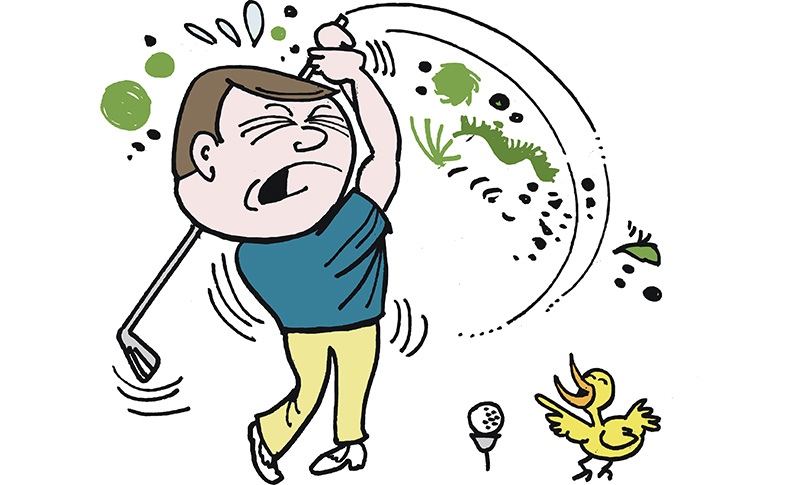“Summertime, and the livin’ is easy,” says the old song. School is out, vacations are on the calendar and the weather is conducive to all sorts of outdoor activities. For summer sports enthusiasts, it’s a treat to be able to leave the gym behind and head out to the tennis court or the golf course – unless, of course, injury makes that impossible. For avid tennis players and dedicated golfers, there’s always the danger of an overuse injury such as tennis elbow or golfer’s elbow.
What is Tennis Elbow?
With tennis elbow pain results from repeated contraction of the forearm muscles that you use to straighten and raise your hand and wrist. How do you get tennis elbow? When playing tennis, you may grip the racquet too tightly or use poor technique, putting stress on the tendons connecting your muscles to your elbow bone. Other activities can also lead to overuse and injury, including:
- Cutting up ingredients for cooking, particularly meat
- Repetitive computer mouse use
- Using plumbing tools
- Painting
- Driving screws
What are some of the tennis elbow symptoms? With tennis elbow, pain generally radiates from the outside of your elbow to your forearm and wrist. It may make it challenging for you to hold a coffee cup, shake hands or turn a doorknob.
What is Golfer’s Elbow?
Golfer’s elbow generally results from overusing the muscles in the forearm that allow you to grip, rotate your arm and flex your wrist. The repetition required by gripping and swinging can injure the tendons in your forearm that attach to your elbow. Other athletes, such as pitchers and bowlers are also prone to golfer’s elbow, and it can result from regular hammering, raking and painting, too.
Golfer’s elbow results in tenderness and pain on the inside of your forearm. You may also feel stiffness in your elbow, making it difficult to curl your fingers into a fist. Your hands and fingers may feel weak and there may be a tingling sensation that radiates into your fingers. You may find it challenging to pick up something with your palm facing down or to flex your wrist.

How do you treat Elbow Pain?
Let’s discuss how to treat tennis elbow and golfers elbow. Both usually respond to self care. Most commonly the treatment for tennis elbow and golfer’s elbow is as follows:
- Take a break. Give your golf or tennis game a rest until the pain disappears. It may be frustrating, but returning to action too soon may cause the injury to recur.
- Cold comfort. Ice the injured area for a few days to provide relief and reduce any inflammation. Try icing the elbow a few times a day for 15 to 20 minutes, using a pack wrapped in a dishtowel so the ice doesn’t injure your skin. The injured tendons lie close to the skin, so they don’t need long icing sessions.
- Brace yourself. Wearing a specialized elbow brace can provide support that reduces the strain on the tendon, allowing it to heal.
- Rub a dub dub. You may want to massage the affected area for five minutes at a time once the inflammation has disappeared.
- Mouth to hand relief. You may want to use an over-the-counter pain reliever to alleviate some of the pain.
If the injury doesn’t seem to be healing, you may want to consult further with your physician. He or she will probably suggest:
- Physiotherapy. Stretching and strengthening the affected area will promote healing while preventing further injury. Eccentric exercises, which lengthen the tendons, have proved to be effective. Your physiotherapist may also use ultrasound or electrotherapy to reduce pain and assist with healing.
- Injections. A new therapy involves injecting platelet-rich plasma into the affected area to hasten healing.
- Surgery. If there is no improvement within six months to a year, it is possible to have the damaged tissue surgically removed.
What is the main cause of Tennis Elbow and Golfer’s Elbow?
Both tennis elbow and golfer’s elbow are repetitive stress injuries caused by overuse that result in inflammation and small tears to tendons in the arm. Tendons connect muscle to bone. Tennis elbow – lateral epicondylitis – refers to injury to tendons on the front of the arm, while golfer’s elbow – medial epicondylitis – is the name given to injury to a forearm tendons.
How log does it take to recover from Tennis Elbow or Golfer’s Elbow?
You shouldn’t return to tennis or golf – or the other activities that led to the injury – until you can perform the challenging motions without pain. Don’t rush yourself, or you will simply re-injure the tendons.
Return to activity gradually. You may want to wear an elbow brace to start, and it is wise to consult with a professional to ensure that you are using the proper motion. If you feel pain during or after exercise, back off for a while. The goal is to stay healthy.
